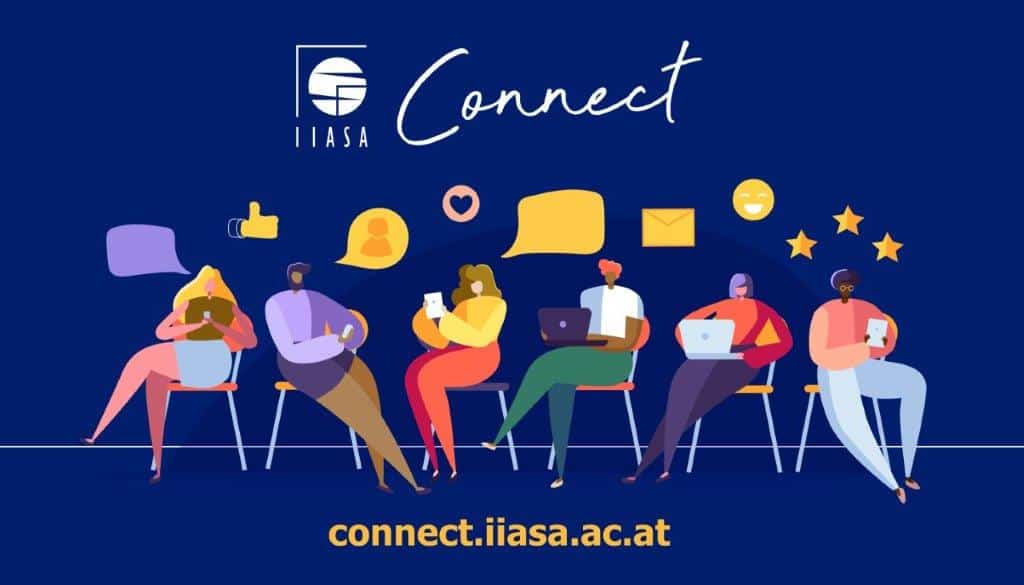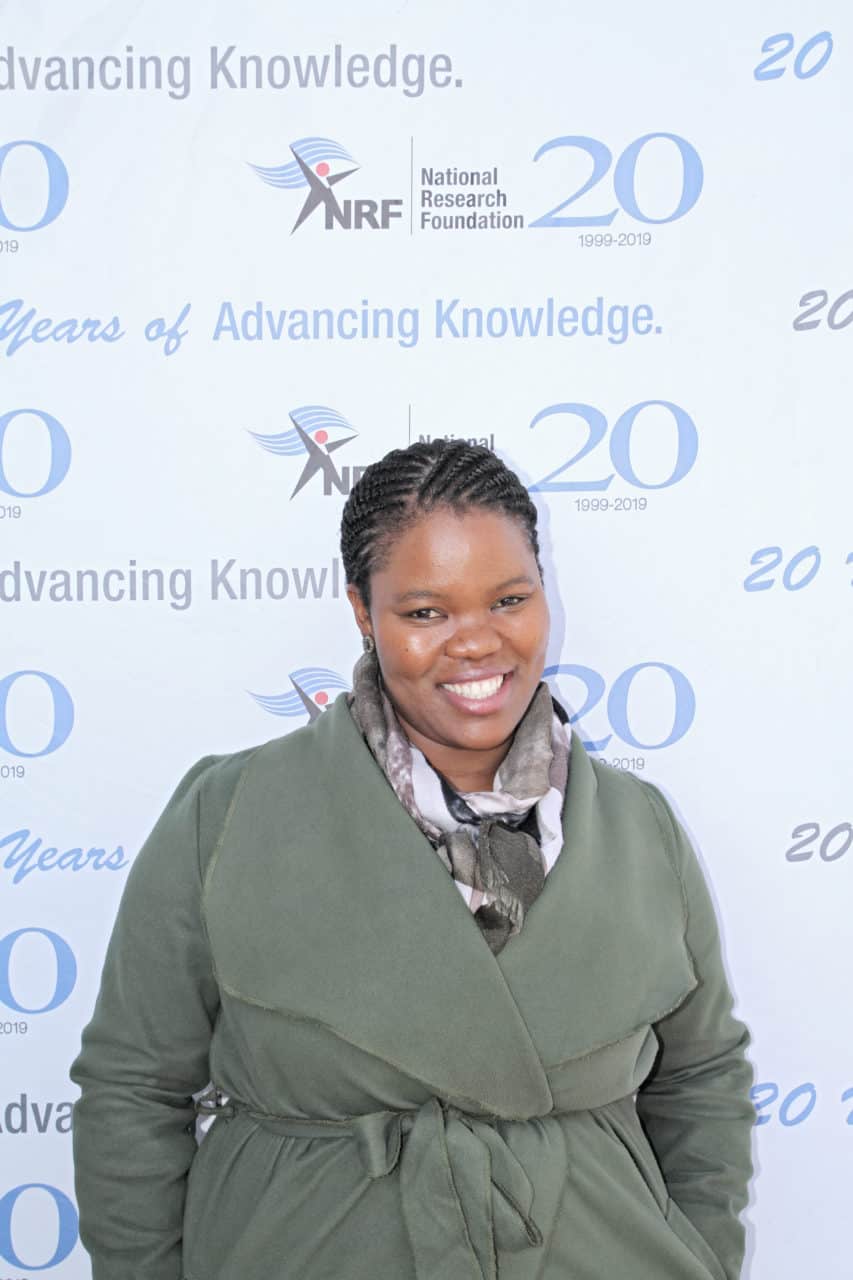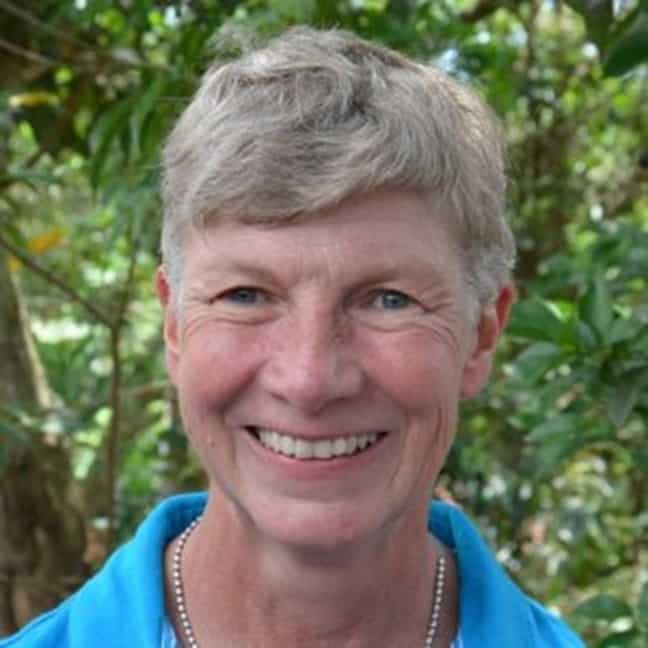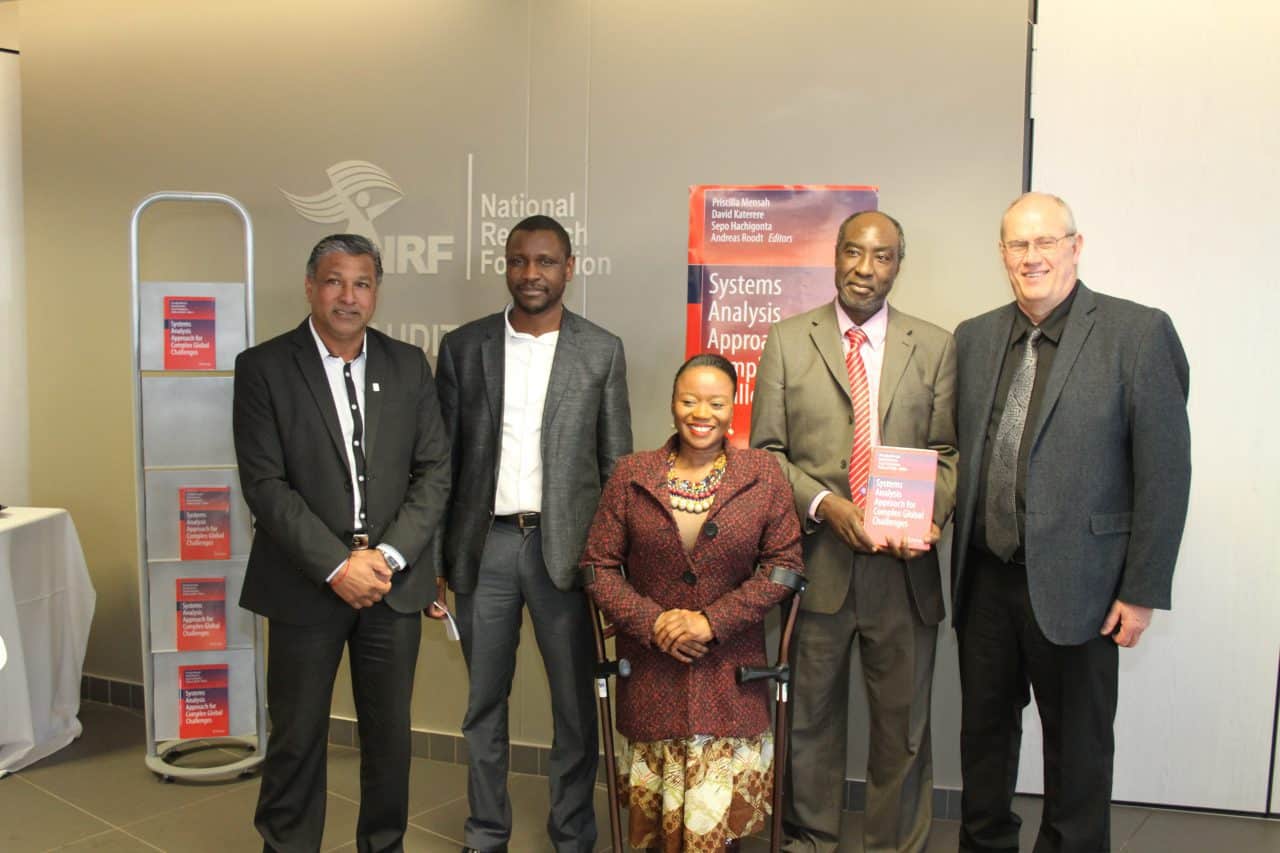Jun 17, 2021 | IIASA Network, South Africa, Systems Analysis
by Kekeletso Makau, Communications Administrator at the Africa Centre for Evidence, University of Johannesburg, former Corporate Communications Intern at the National Research Foundation (NRF) of South Africa and 2020 IIASA External Relations Fellow

In mid-March last year, I was introduced to Nicole Arbour and the broader Communications and External Relations Department at the International Institute for Applied Systems Analysis (IIASA). This was in my capacity as the incoming External Relations (ER) Fellow and current Corporate Communications Intern at the National Research Foundation (NRF) of South Africa. The announcement of my ER fellowship came in just days before South Africa’s first lockdown due to the COVID-19 pandemic. It was the beginning of a new normal, where I, like many others would have to rely on multiple digital platforms and tools to work, communicate, and in some instances, engage for social interactions.
As I was spending more time online, learning more and more about multiple digital tools and how to optimally use them to “get stuff done” timeously under COVID-19 lockdown, the timing was perfect to assist in the conceptualization of a new online virtual platform. This would serve as a community building tool, developed to bring together the global systems analysis community that includes IIASA current staff, alumni, and National Member Organization (NMO) members, committees, and collaborators. Working in partnership with the IIASA CER team as part of the NRF Strategic Partnerships (SP) directorate team, I was well positioned, and felt empowered to deliver on this stakeholder relations exercise, owing to the support I enjoyed from the whole team.
Working on bringing together researchers in the field of Systems Analysis in South Africa (and the broader Southern African Development Community region) on the IIASA Connect platform was a highlight that continues to be one to this day. As a communications professional, I enjoy storytelling, and I enjoyed the privilege to read up on our network members, from emerging researchers to the well-established names that need no introduction. It has been insightful and inspirational to my own journey in science communication.
The successful launch of the IIASA Connect platform in October 2020 was evidenced by the support of leaders, in particular, IIASA Director General Albert van Jaarsveld, NRF deputy CEO of RISA and then Vice-Chair of the IIASA Council Gansen Pillay, and Deputy Vice Chancellor of Nelson Mandela University and former South African Systems Analysis Centre (SASAC) Director Thandi Mgwebi, who delivered an insightful keynote address on leveraging networks for increased systems analysis impact. The successful launch event felt like a pat on the back to me, as this was a project commenced under uncertain COVID times. Within months we were able to gather members of the SASAC community and continue to facilitate engagements in an effort to offer benefits to our members for being part of an exclusive networking platform that enables their growth and fuels their passion for advanced systems analysis research.

I am currently one of the Regional Outreach Leads focused on the South African systems analysis community on IIASA Connect. In my use of the platform, I have found it to be a highly interactive tool, with an interactive map you encounter after successfully logging-in. It is always fun seeking out familiar faces on the map from different regions of the world. The opportunity to engage live with high profile members of academia from your own region and abroad has been made (more) accessible on the platform, thereby enabling more opportunities of research collaborations with scientists you wouldn’t ordinarily have access to. For me, it means having credible sources of content and inspiration for my writing. Having both researchers and policymakers on the platform, makes IIASA Connect the ideal tool to bridge the existing gaps in the science-to-policy interface. Information is shared through the live feed, making it easy for a user to navigate to the source site and read up on information that I would have otherwise not came across or considered.
To be part of such a big stakeholder exercise from start to finish has been fulfilling, and the journey continues. The IIASA Connect platform, much like my career in science communications is still in its early stages. We are fully aware of the work that still needs to be done to reach the tool’s optimal capacity to the benefit of our network members. We are excited about the prospects it brings to science diplomacy, particularly for South Africa as an IIASA member country, our researchers and policymakers alike in advancing engagements between these two parties and using the platform to achieve the SDGs and agenda 2063 for the African continent. For me personally, it is an open access to the world’s best researchers to learn from, fuel my science communications journey, and advance my external relations expertise.
Note: This article gives the views of the author, and not the position of the Nexus blog, nor of the International Institute for Applied Systems Analysis.
Nov 18, 2019 | IIASA Network, South Africa, Women in Science
Mary Scholes has been serving on the IIASA Science Advisory Committee (SAC) since 2011 and was appointed as Chair in 2014. She discusses her views of SAC in this interview with Monika Bauer, IIASA Network and Alumni Officer.

Mary Scholes
Tell us about your journey as a member of SAC.
It’s been a very interesting journey for me. When I was first asked to join SAC, I declined. Over time, I found that the institute changed to look at the quality of the research in the programs, and it was at this point that I said I would become part of the committee. I soon realized that I didn’t really understand the overarching top down role that IIASA Council played.
It was very interesting. The first two to three years was a learning curve working on communicating with the IIASA Council. The institute was conducting good science, and we didn’t want that to be overlooked in any way. We re-wrote the terms of reference for SAC, focusing on the engagement between what SAC does during the year and how that is communicated to Council. From that point on, it was always on the agenda, documents were always acknowledged, and there was always follow up. It my opinion, it changed how SAC functioned.
In 2017, the institute started an institutional review process, and I represented SAC on the taskforce that was assembled to support this effort. Throughout the process, in my opinion, it came out quite clearly, that SAC needs to play a much more engaged role with the Council Program Committee, and that the Program Committee should ensure that SAC’s voice reaches the Council. In the past, there was a quite strong responsibility on the SAC Chair, to make sure the voice of the committee was heard, and this process resolved this.
What will happen next, I think, is that SAC will interact much more closely with the new Deputy Director General for Science (DDGS), who will then take the views or recommendations of SAC to Council. It would be advantageous to still have the SAC Chair invited to IIASA Council meetings to ensure information is conveyed or to answer any follow up questions. I would also suggest that SAC continues in the role of an advisory board to IIASA. I believe any good international science institution, anywhere in the world, should have an external, neutral, excellent research advisory body.
How do you see SAC developing as you step down at the end of this year?
First, that SAC continues. Second, that the Chairperson interacts frequently with the new DDGS. Third, that the DDGS communicates SAC’s feedback to Council, and to ensure that this is the voice of SAC, the Chairperson should be invited to that particular section of the Council meetings. For this, the terms of reference would however need to be revisited.
How is this different from the current situation?
At the moment, SAC is meant to only look backwards. I plan to challenge this, so that it can be raised in 2020 because, in my opinion, this is the best committee to do an independent horizon scanning exercise. Internal researchers can do a horizon scanning exercise from their perspective, and SAC add expertise from other areas and regions. Therefore, I believe SAC needs to be given the space of being retrospective as well as the space to look forward and to take those ideas to the DDG of Science.
Those are the three critical roles I think that SAC needs to take in the future. If this is done, it would greatly benefit the scientific governance of the institute.
SAC members can serve a maximum of six years. This is a good decision. A new Chairperson will be a new beginning, with these principle guidelines providing a foundation.
What do you feel are the main takeaways from SAC’s recent report to the IIASA Council?
First, SAC is very pleased about the new DDGS position, as we feel it’s important to have someone who can solely focus on driving the science agenda rather than also running the entire institution.
Second, it’s important for the strategic plan to be agile. I think the way the new strategic plan needs to be developed is probably in phases. For example, instead of designing a ten-year plan, do a three-year portion and then a five-year portion; there could also be staggered overlaps. This way the institute is much more agile while focusing on the results rather than where to allocate the budget, and it allows flexibility for the institution to change as research progresses or is completed. SAC would like to see an agile research strategy that also takes into account the fundamentals of knowledge versus what can be done with iterative machine learning.
Lastly, there was concern about the processes regarding recent changes at the institute. This is a hard issue to handle, and there are ways of potentially managing it better.
What has left the greatest impression on you during your time on SAC?
I think it’s critical how IIASA moves forward with its National Member Organizations (NMOs), how governments stay engaged, and how these relationships work in terms of a reciprocal relationship.
My experiences in South Africa have been closely tied to the Southern African Systems Analysis Centre (SASAC), an initiative organized by IIASA and the South African NMO. At the moment the program is stagnant, and we’re hoping the materials we produced for SASAC will find a new avenue for teaching a new cohort as there are absolutely wonderful examples of success stories.
After completing the three-week SASAC High-level Capacity Strengthening Program, participants would update their CVs and quickly be promoted to higher positions at various universities and institutions. Individuals from other African countries would come to South Africa because there were no opportunities in their home countries, complete the program, and then be promoted into positions at universities back home. Another example from the last course in 2017: I had 16 participants and already 13 manuscripts have been published. That’s a huge return on investment. The program really worked, and we would obviously like to see the program continue. Perhaps the gentlest way would be to have a committed postdoc come to IIASA and then go back to South Africa and drive a new program.
Mary Scholes will be stepping down as SAC Chair in December 2019 and will continue serving on the South African NMO Committee for IIASA.
Notes:
More updates from IIASA alumni or information on the IIASA network may be found here.
This article gives the views of the author, and not the position of the Nexus blog, nor of the International Institute for Applied Systems Analysis.
Oct 15, 2019 | IIASA Network, Science and Policy, South Africa
Bettina Greenwell, communications officer at IIASA, talks to Dorsamy (Gansen) Pillay, Deputy CEO: Research and Innovation Support and Advancement (RISA), National Research Foundation (NRF), and IIASA council member for South Africa, about the NRF’s statement on ethical research and scholarly publishing practices. The statement was jointly issued in August 2019 with South African partners within the National System of Innovation (NSI) in South Africa.

Dorsamy (Gansen) Pillay, Deputy CEO: Research and Innovation Support and Advancement (RISA), National Research Foundation (NRF), and IIASA council member for South Africa
What is ethics in research and why is it so important?
Research is a quest for truth. The research must be well conceptualized with a clear research question(s) which can lead to new knowledge. Good ethics and integrity dictate that the truth must be presented in its absolute form, and the findings need to be appropriately interpreted and should be reproducible.
South Africa was awarded the right to host the 7th World Conference on Research Integrity (WCRI) in 2021 in Cape Town – the first time it will be hosted on an African continent. Why is this statement important for the science community in South Africa?
Firstly, it is a privilege to host this conference and South Africa feels very honored. The statement on ethical research and scholarly publishing practices is an important contribution to this conference. We have noticed that South African academics and researchers, especially new and emerging researchers, are under a lot of pressure to publish their work for a variety of reasons. In some instances, ethical principles have been violated. This included the dissemination of research through predatory journals. However, this was not unique to South Africa only as other countries also faced similar challenges. The NRF as a science granting foundation felt compelled to respond to this challenge. The NRF sees itself as a custodian and guardian of research ethics and integrity. Through our peer-review processes, we ensure that research proposals for funding have been robustly interrogated, and the highest ethical principles upheld. As a consequence the NRF developed and issued a joint statement on ethical research and scholarly publications in collaboration with the Department of Science and Innovation (DSI), the Department of Higher Education and Training (DHET), the Council on Higher Education (CHE), the Academy of science of South Africa (ASSAf), Universities South African (USAf) and the NRF. In addition, the NRF has previously issued a statement on predatory publishing.
What do you think will be the key scientific challenges to face South Africa in the next few years? And how do you envision IIASA helping South Africa to tackle these?
There are several challenges, and some of the most pressing ones are poverty and inequality, population migration and unemployment. Given the systems analysis approach, we feel we can draw on IIASA’s expertise to address these challenges. IIASA has used South Africa as a laboratory for its population studies research over several years. It is now time to ensure that this research is translated into policies so that it may impact positively on society.
Housing is also a problem in South Africa. There is a lack of decent, affordable housing for people. The new IIASA strategic plan focuses on smart cities – this could play a role in addressing these housing challenges.
IIASA’s expertise is a systems analysis approach which can be applied to complex issues. The important part of the work is when scientific results are turned into policy – that’s when there is an actual, tangible societal benefit.
South Africa has been an IIASA member since 2007. What have been the highlights of the South Africa-IIASA membership until now?
We see the South Africa IIASA membership as a partnership, and many benefits have accrued through this partnership over the past decade. An example is the Southern African Young Scientists Summer Program (SA-YSSP), which was inspired by the success of the IIASA YSSP. This program ran from 2012 to 2015, and trained the next generation of young scientists.
Another example is the Southern African Systems Analysis Centre (SASAC) initiative, which focused on expanding systems analysis expertise in Southern Africa. Both initiatives were endorsed by the South African Department of Science and Innovation.
About NRF and Dorsamy (Gansen) Pillay
As an entity of the Department of Science and Technology (DST), the NRF promotes and supports research through funding, human resource development and the provision of National Research Facilities in all fields of natural and social sciences, humanities and technology. Dr Dorsamy (Gansen) Pillay is currently the Deputy Chief Executive Officer (DCEO): Research and Innovation Support and Advancement (RISA) of the National Research Foundation (NRF) of South Africa. His thirty-year career in research, teaching, management and leadership includes academic, management and leadership positions at the former University of Durban-Westville and at the Durban University of Technology. His research has focused on both prokaryotic and eukaryotic microorganisms, from human diseases to bacterial plant diseases with particular emphasis on elucidating the molecular architecture of the causal microorganisms with a view to understanding genetic diversity, extra-chromosomal elements and developing rapid disease diagnoses. He is currently Vice Chair of the IIASA Council.
Notes:
Please click on the link to read the statement on ethical research and scholarly publishing.
More information on IIASA and South Africa.
This article gives the views of the authors, and not the position of the Nexus blog, nor of the International Institute for Applied Systems Analysis.
Jul 9, 2018 | Alumni, Communication, IIASA Network, South Africa, Systems Analysis, Young Scientists
By Sandra Ortellado, IIASA Science Communication Fellow 2018
In 2007, Sepo Hachigonta was a first-year PhD student studying crop and climate modeling and member of the YSSP cohort. Today, he is the director in the strategic partnership directorate at the National Research Foundation (NRF) in South Africa and one of the editors of the recently launched book Systems Analysis for Complex Global Challenges, which summarizes systems analysis research and its policy implications for issues in South Africa.

From left: Gansen Pillay, Deputy Chief Executive Officer: Research and Innovation Support and Advancement, NRF, Sepo Hachigonta, Editor, Priscilla Mensah, Editor, David Katerere, Editor, Andreas Roodt Editor
But the YSSP program is what first planted the seed for systems analysis thinking, he says, with lots of potential for growth.
Through his YSSP experience, Hachigonta saw that his research could impact the policy system within his home country of South Africa and the nearby region, and he forged lasting bonds with his peers. Together, they were able to think broadly about both academic and cultural issues, giving them the tools to challenge uncertainty and lead systems analysis research across the globe.
Afterwards, Hachigonta spent four years as part of a team leading the NRF, the South African IIASA national member organization (NMO), as well as the Southern African Young Scientists Summer Program (SA-YSSP), which later matured into the South African Systems Analysis Centre. The impressive accomplishments that resulted from these programs deserved to be recognized and highlighted, says Hachigonta, so he and his colleagues collected several years’ worth of research and learning into the book, a collaboration between both IIASA and South African experts.
“After we looked back at the investment we put in the YSSP, we had lots of programs that were happening in South Africa, and lots of publications and collaboration that we wanted to reignite,” said Hachigonta. “We want to look at the issues that we tackled with system analysis as well as the impact of our collaborations with IIASA.”
Now, many years into the relationship between IIASA and South Africa, that partnership has grown.
Between 2012 and 2015, the number of joint programs and collaborations between IIASA and South Africa increased substantially, and the SA-YSSP taught systems analysis skills to over 80 doctoral students from 30 countries, including 35 young scholars from South Africa.
In fact, several of the co-authors are former SA-YSSP alumni and supervisors turned experts in their fields.
“We wanted to use the book as a barometer to show that thanks to NMO public entity funding, students have matured and developed into experts and are able to use what they learned towards the betterment of the people,” says Hachigonta. The book is localized towards issues in South Africa, so it will bring home ideas about how to apply systems analysis thinking to problems like HIV and economic inequality, he adds.
“It’s not just a modeling component in the book, it still speaks to issues that are faced by society.”
Complex social dilemmas like these require clear and thoughtful communication for broader audiences, so the abstracts of the book are organized in sections to discuss how each chapter aligns systems analysis with policymaking and social improvement. That way, the reader can look at the abstract to make sense of the chapter without going into the modeling details.
“Systems analysis is like a black box, we do it every day but don’t learn what exactly it is. But in different countries and different sectors, people are always using systems analysis methodologies,” said Hachigonta, “so we’re hoping this book will enlighten the research community as well as other stakeholders on what systems analysis is and how it can be used to understand some of the challenges that we have.”
“Enlightenment” is a poetic way to frame their goal: recalling the age of human reason that popularized science and paved the way for political revolutions, Hachigonta knows the value of passing down years of intellectual heritage from one cohort of researchers to the next.
“You are watching this seed that was planted grow over time, which keeps you motivated,” says Hachigonta.
“Looking back, I am where I am now because of my involvement with IIASA 11 years ago, which has been shaping my life and the leadership role I’ve been playing within South Africa ever since.”






You must be logged in to post a comment.